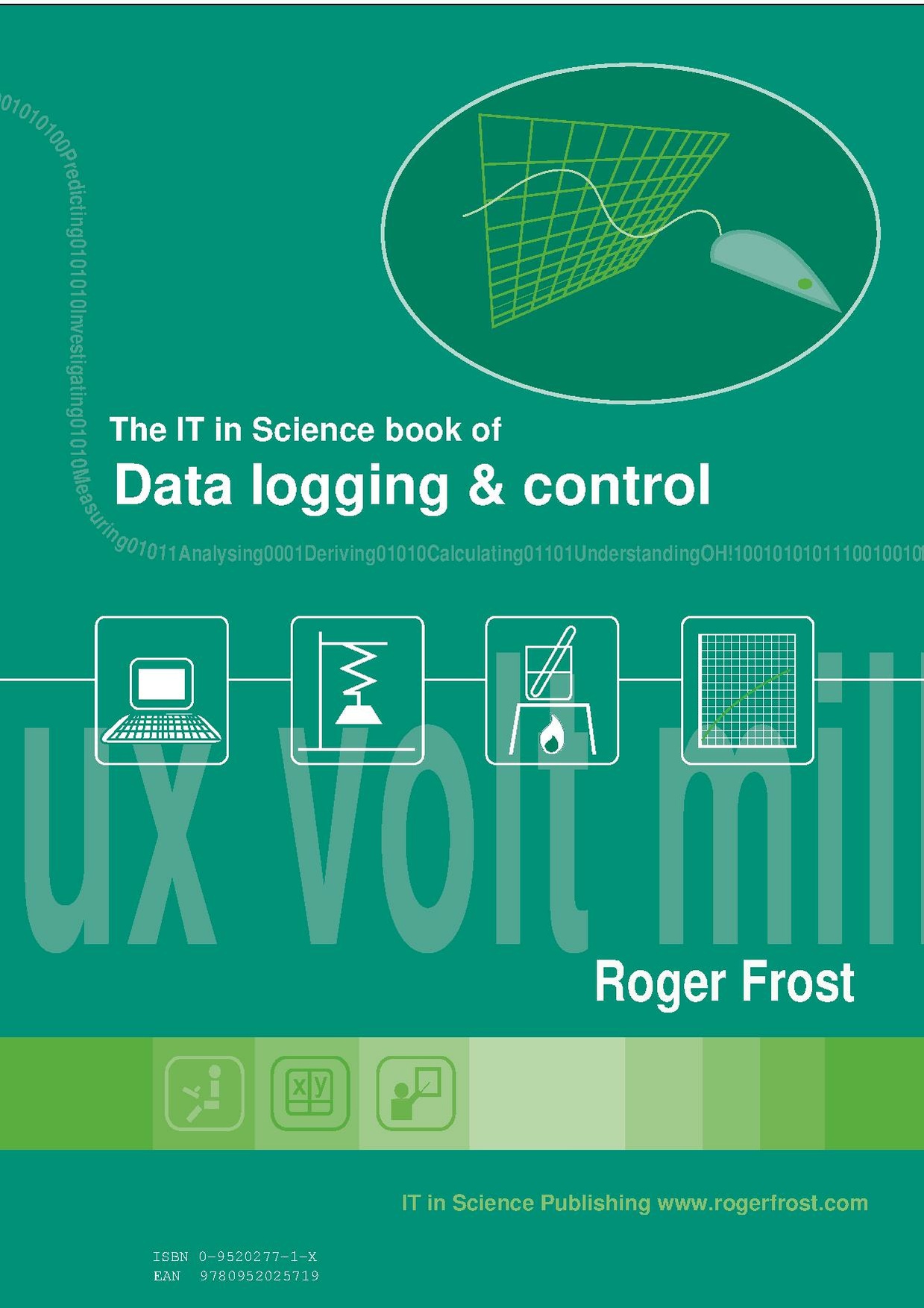Data Logging and Control: Difference between revisions
mNo edit summary |
No edit summary |
||
| (16 intermediate revisions by 2 users not shown) | |||
| Line 1: | Line 1: | ||
{{Rinfo | {{Rinfo | ||
|type= Lesson idea | |||
|attribution={{RogerFrost}} | |||
|title=Data Logging and Control | |title=Data Logging and Control | ||
|topic=ICT | |topic=ICT | ||
| Line 5: | Line 8: | ||
|subject=Science | |subject=Science | ||
|resourcenumber=SC0052 | |resourcenumber=SC0052 | ||
|age= Secondary | |age= KS3, KS4, Secondary | ||
|content=A book of ideas showing the scope for using sensors to measure in science. Drawing on many sources, it catalogues the sensors available and suggests what they might be used for. There are not only classic and novel school experiments | |content=A book of ideas showing the scope for using sensors to measure in science. Drawing on many sources, it catalogues the sensors available and suggests what they might be used for. There are not only classic and novel school experiments but also ideas to investigate, such as ‘which fabric keeps us warmest?’ Though this manual appeared at a time when teachers were asking ‘what do I use the technology for’, it also aimed to show how sensors can enhance science teaching. Some of the ideas from this book are collected on [[Data_logging_ideas|our page with data logging ideas]]. | ||
|strategy= | |strategy= | ||
|tagline=A compendium with numerous ideas for using sensors to teach science | |tagline=A compendium with numerous ideas for using sensors to teach science. | ||
|Learning Objectives= | |Learning Objectives= | ||
* | * Predicting the kind of graph their experiment will show. | ||
* | * Evaluating their results and redo their work if needed - more so than in a traditional experiment. | ||
* | * Analysing their graph data, such as compute areas or plot a differential of a change. | ||
* | * Stating what a graph shows about a change. | ||
* | * Saying how a graph tells them what is happening. | ||
* | * Seeing ways to take their experiment further. | ||
|additional resources= | |additional resources= | ||
|useful information=Book data: ISBN 095202571X 132pp spiral bound. First published 1993 revised x 11 to 2004 | |useful information=Book data: ISBN 095202571X 132pp spiral bound. First published in 1993, revised x 11 to 2004, £16.50, see Amazon: http://www.amazon.co.uk/Roger-Frost/e/B0034PHJ5M. <br />Author: [http://rogerfrost.com Roger Frost] | ||
|related resources=[[Data logging ideas| List of experiments in Data logging & Control | |related resources=[[Data logging ideas| List of experiments in Data logging & Control]] | ||
|other= | |other= | ||
|format=Online book - licensed to ORBIT | |format=Online book - licensed to ORBIT | ||
|final=yes | |final=yes | ||
|resources= The resource is available in a number of formats | |resources= The resource is available in a number of formats: | ||
* printable PDF | * as a printable PDF - 134 pages [[file:Data Logging and Control.pdf| ebook to download Data logging & Control]] | ||
* editable | * as an editable Word document - 150 pages [[file:Data Logging and Control.doc]] Use to extract individual pages. Please note that this is a large file. | ||
* | * as a web page available on this wiki http://orbit.educ.cam.ac.uk/resources/books/Data_Logging_and_Control/index.htm | ||
* | * in Flash web format at http://rogerfrost.com/dcbook.html | ||
| Line 34: | Line 37: | ||
[[Category:Secondary]] [[Category:Science]] [[Category:ICT]][[Category:Sensors]] | [[Category:Secondary]] [[Category:Science]] [[Category:ICT]][[Category:Sensors]] | ||
[[File:Dataloggingandcontrol1.png|border| | [[File:Dataloggingandcontrol1.png|border|150px| |Preview snapshot ]] | ||
[[File:Dataloggingandcontrol3.png|border| | [[File:Dataloggingandcontrol2.png|border|150px| |Preview snapshot ]] | ||
[[File:Dataloggingandcontrol6.png|border| | [[File:Dataloggingandcontrol3.png|border|150px| |Preview snapshot ]] | ||
[[File:Dataloggingandcontrol4.png|border|150px| |Preview snapshot ]] | |||
[[File:Dataloggingandcontrol5.png|border|150px| |Preview snapshot ]] | |||
[[File:Dataloggingandcontrol6.png|border|150px| |Preview snapshot ]] | |||
[[File:Dataloggingandcontrol7.png|border|150px| |Preview snapshot ]] | |||
{{RogerFrost}} | {{RogerFrost}} | ||
Latest revision as of 19:51, 31 January 2015
Lesson idea. A book of ideas showing the scope for using sensors to measure in science. Drawing on many sources, it catalogues the sensors available and suggests what they might be used for. There are not only classic and novel school experiments but also ideas to investigate, such as ‘which fabric keeps us warmest?’ Though this manual appeared at a time when teachers were asking ‘what do I use the technology for’, it also aimed to show how sensors can enhance science teaching. Some of the ideas from this book are collected on our page with data logging ideas.
Teaching approach. This book provides a set of resources and lesson ideas with ICT(i) as a key focus for use in inquiry(ta) based learning and the scientific method(ta). It offers opportunities for use of group work(ta) and collaboration(ta) as well as whole class(ta) questioning(ta). (edit)
| Resource details | |
| Title | Data Logging and Control |
| Topic | [[Topics/ICT|ICT]] |
| Teaching approach | [[Teaching Approaches/Questioning|Questioning]], [[Teaching Approaches/Whole class|Whole class]], [[Teaching Approaches/Group work|Group work]], [[Teaching Approaches/Inquiry|Inquiry]], [[Teaching Approaches/Collaboration|Collaboration]], [[Teaching Approaches/Scientific method|Scientific method]] |
| Learning Objectives |
|
| Format / structure | Online book - licensed to ORBIT |
| Subject | [[Resources/Science|Science]] |
| Age of students / grade | [[Resources/Secondary|Secondary]], [[Resources/KS4|KS4]], [[Resources/KS3|KS3]]
|
| Useful information | Book data: ISBN 095202571X 132pp spiral bound. First published in 1993, revised x 11 to 2004, £16.50, see Amazon: http://www.amazon.co.uk/Roger-Frost/e/B0034PHJ5M. |
| Related ORBIT Wiki Resources | |
| Files and resources to view and download | The resource is available in a number of formats:
|
| Acknowledgement | This resource was created by Roger Frost, and is under the ORBIT's CC licence. |
This resource was created by Roger Frost, and is under the ORBIT's CC licence.









